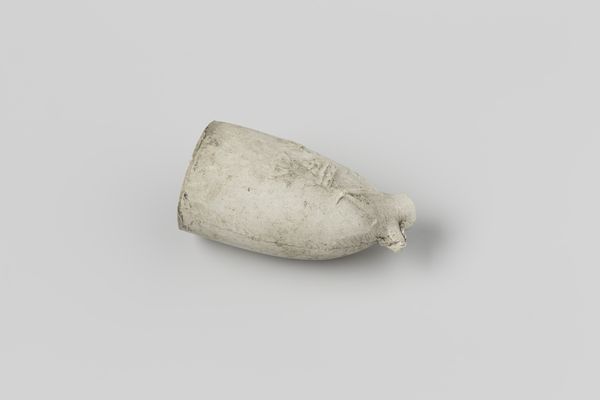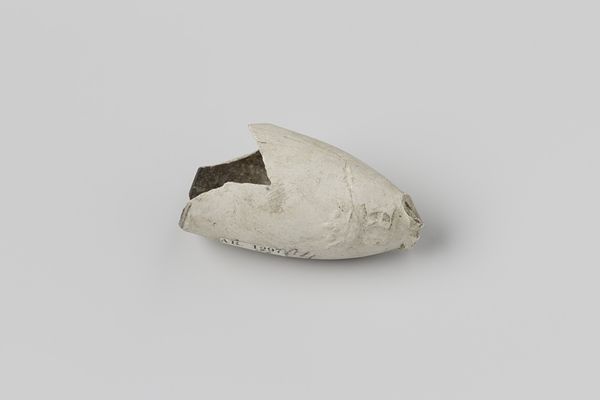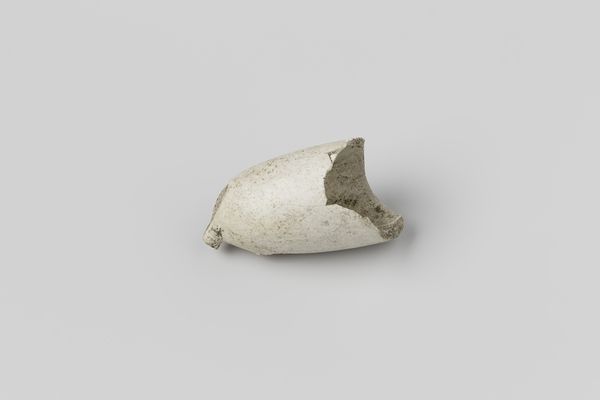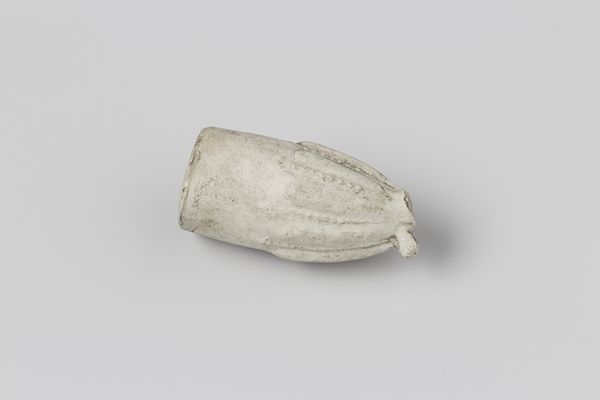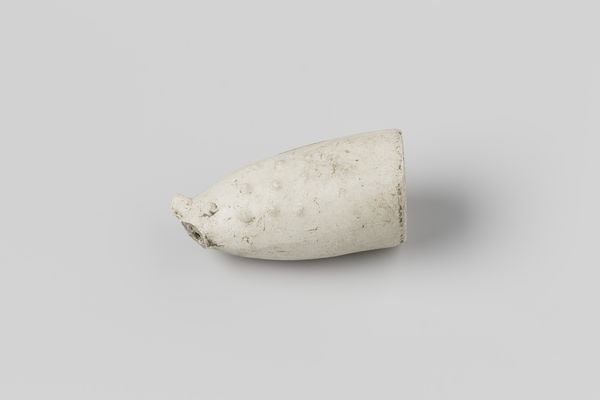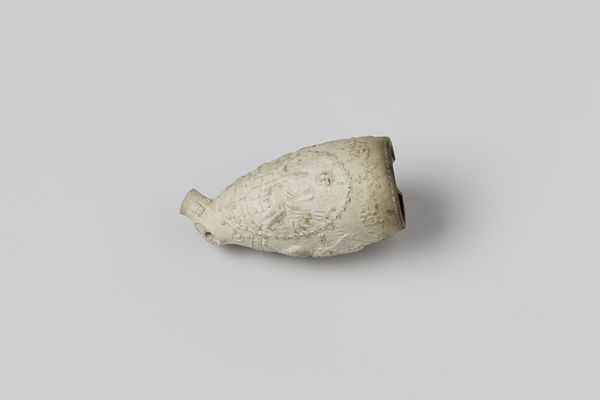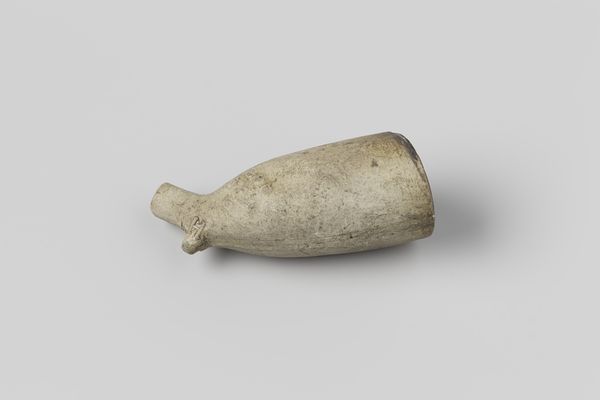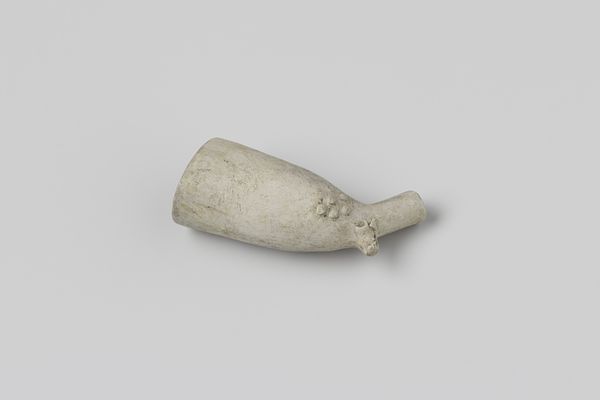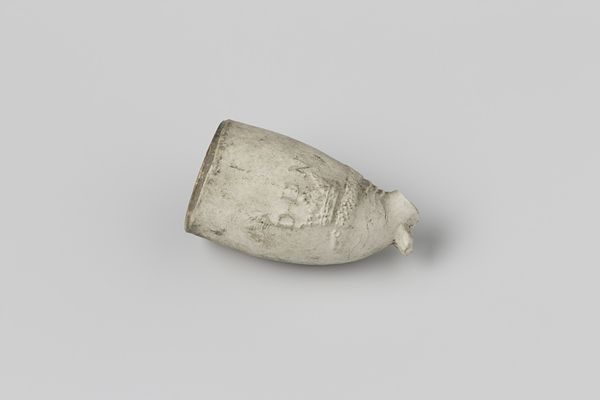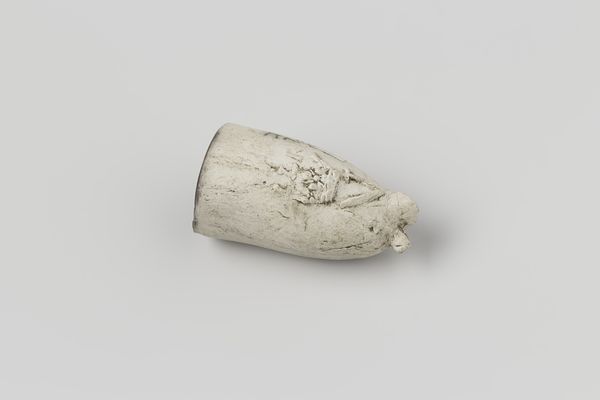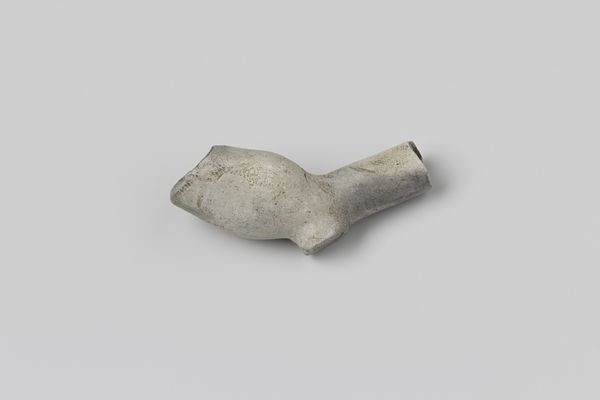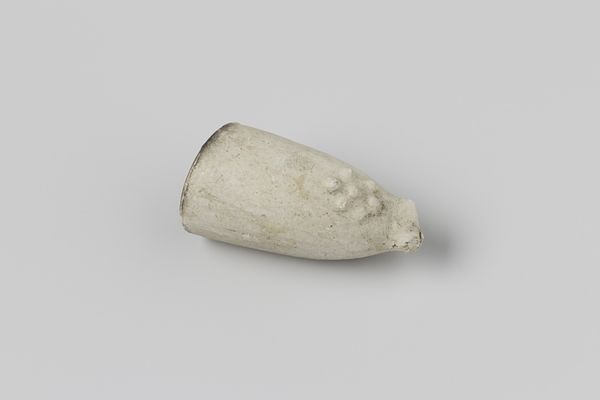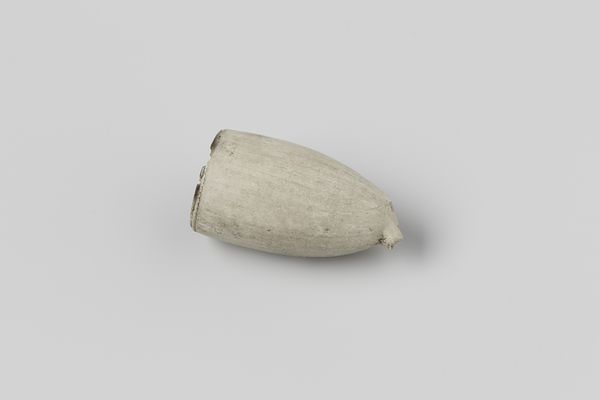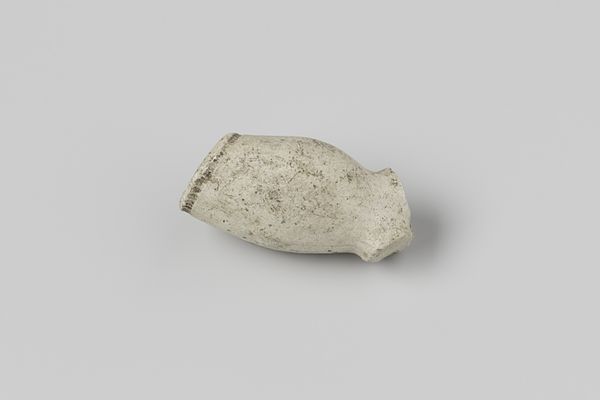
ceramic, earthenware
#
dutch-golden-age
#
ceramic
#
earthenware
Dimensions: length 4.1 cm, width 2.0 cm
Copyright: Rijks Museum: Open Domain
Editor: This is "Fragment pijpenkop," or pipe bowl fragment, made between 1710 and 1740, of ceramic earthenware. It’s strangely compelling for something so broken, the wear and tear adds so much character. What strikes you about this object? Curator: I'm interested in what this fragment tells us about labour and consumption during the Dutch Golden Age. These pipes were mass-produced items, yet crafted from the earth. Who was making these? Where were they working? How widespread was tobacco use to make such manufacture commercially viable? Editor: That's fascinating! I was just looking at the object itself, the cracks and shape of the fragment. I didn't think about the social context. Curator: The fragility is also key. These pipes were commonplace, but easily broken, a cheap everyday object produced for a consumer culture rapidly taking hold. That speaks volumes about value then, doesn't it? And now, we put it behind glass. Editor: So, its value now is completely different from its original purpose because of the history it carries. It went from mass-produced to a unique artifact. Curator: Precisely. Consider the transformation of materials, from clay to commodity, from everyday use to museum display. It highlights the complex relationship between object, labor, and meaning across time. Editor: This makes me see objects in a completely different light. I’m going to spend some time in the museum shops. Thanks so much! Curator: My pleasure! Thinking about objects beyond just their aesthetic qualities always leads to richer insights.
Comments
No comments
Be the first to comment and join the conversation on the ultimate creative platform.
